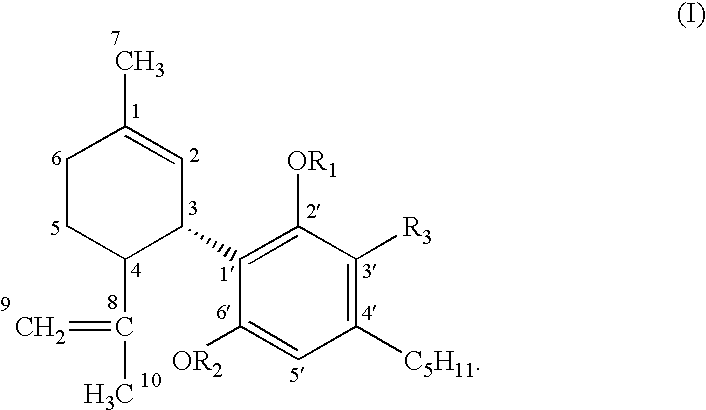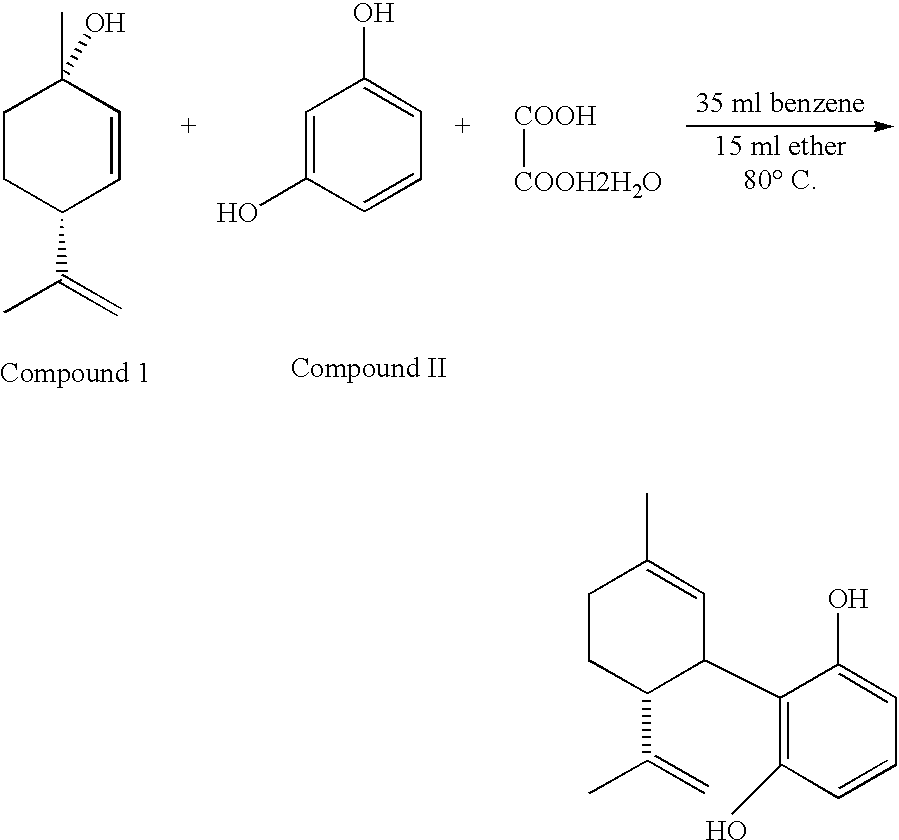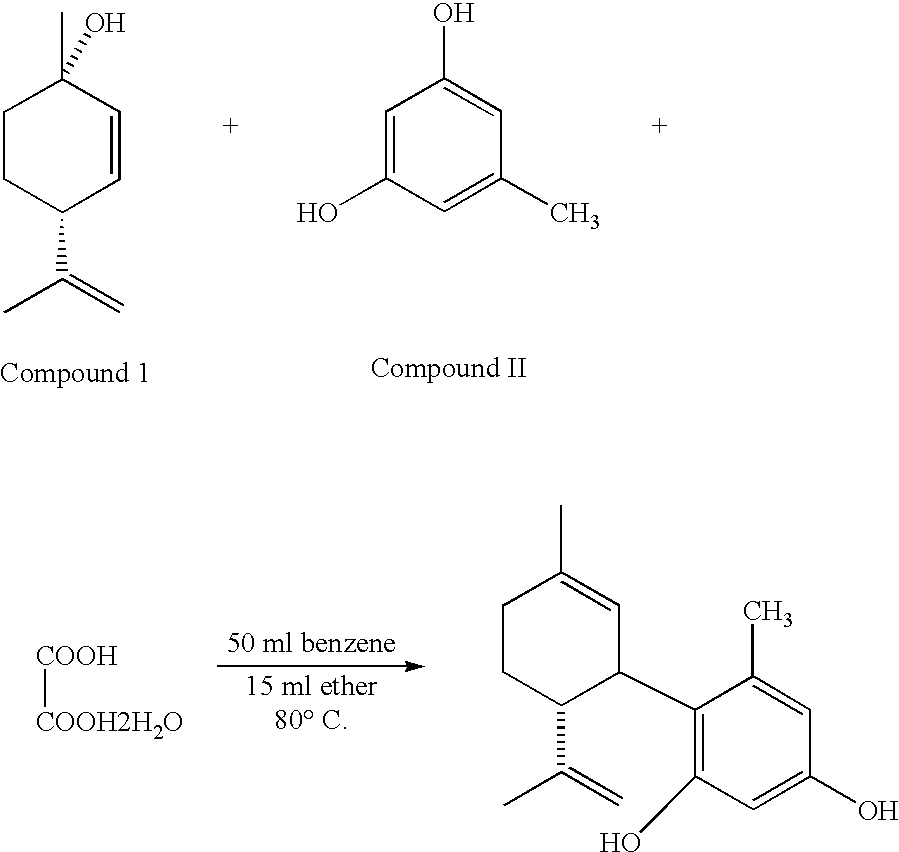Vasodilator cannabinoid analogs
a cannabinoid and vasodilator technology, applied in the field of ligands of the mammalian cb receptor family, can solve the problems of limited potency and limited usefulness of abn-cbd, and achieve the effect of preventing any burns to the tail and reducing the time to remove the tail
- Summary
- Abstract
- Description
- Claims
- Application Information
AI Technical Summary
Benefits of technology
Problems solved by technology
Method used
Image
Examples
example i
FIG. 1 shows the results of the vasodilator effect of 0-1602 (open circles, 0-1848 (closed circles) and Abn-cbd (squares). These results demonstrate the agonistic effect of 0-1602 and 0-1848 on the effects of Abn-cbd. These procedures were done as described previously in PNAS 96, pp. 14136-14142 (1999). Mice were anesthetized with pentobarbitol and laparotomized and cannulated using a PE50 polyethylene cannula inserted into the abdominal aorta. Both renal and femoral arteries were ligated, the heart was removed, and the mesenteric area including the liver was perfused with oxygenated Krebs buffer at 36.degree. C., using a peristaltic pump and a constant flow rate of 0.7 ml / min. Perfusion pressure monitored near the inflow cannula should be 25-30 mmHg (1 mmHg+133 Pa) and is increased to 60-70 mmHg by the inclusion of 15 mM phenylephrine in the medium. Vasodilation is expressed as percent relaxation of established tone, 100% being equal to the difference in perfusion pressure in the a...
example ii
FIG. 2 shows the results of inhibition of 0-1602 or 0-1848 induced vasodilation following treatment with cannabinoid analogs. These results demonstrate that 0-1821, 0-1847, and 0-1868 are antagonists of the Abn-cbd derivatives described herein. Evaluation of vasodilator response was performed as in Example 1 except that after addition of either the agonists 0-1602 (FIG. 2A) or 0-1848 (FIG. 2B-2C) as intra arterial bolus injections, the mesenteric preparation was perfused with either drug free buffer (solid circles) or buffer containing 1 .mu.M. 0-1821 (FIG. 2(A), open circles), 0-1847 (FIG. 2(B), open circles), or 0-1868 (FIG. 2(C), open circles. The shaded circles in FIG. 2(A) represent the antagonistic effect of 0-1821 at a concentration of 10 .mu.M, a concentration which shows almost complete inhibition of the vasodilatory effect of compound 0-1602. This figure demonstrates the antagonist effects of the cannabidiol derivatives of the present invention.
PUM
| Property | Measurement | Unit |
|---|---|---|
| time | aaaaa | aaaaa |
| volumes | aaaaa | aaaaa |
| flow rate | aaaaa | aaaaa |
Abstract
Description
Claims
Application Information
 Login to View More
Login to View More - R&D
- Intellectual Property
- Life Sciences
- Materials
- Tech Scout
- Unparalleled Data Quality
- Higher Quality Content
- 60% Fewer Hallucinations
Browse by: Latest US Patents, China's latest patents, Technical Efficacy Thesaurus, Application Domain, Technology Topic, Popular Technical Reports.
© 2025 PatSnap. All rights reserved.Legal|Privacy policy|Modern Slavery Act Transparency Statement|Sitemap|About US| Contact US: help@patsnap.com



